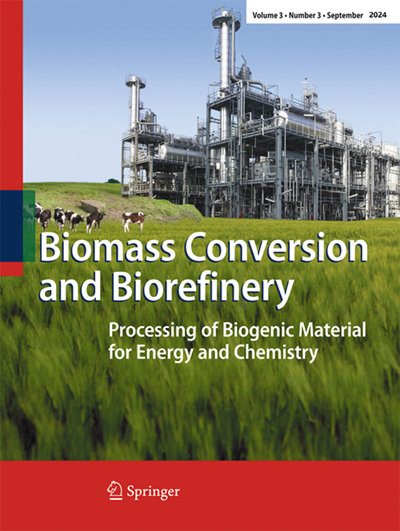Optimization of bioethanol production from reducing sugar in stress tolerance by GSH: GSSG cycle in S. cerevisiae
Abstract
Bio-ethanol is the largest and most dominant biotechnology bio-fuel and Saccharomyces cerivicae is the most favored microorganism employed for its industrial production. However, obtaining maximum yields from an ethanol fermentation and reducing ethanol fermentation stress remain a technical challenge. Usage of food biomass for producing bio-fuel caused food shortage, and conversion of waste lignocellulosic biomass into bio-fuel was costly and affecting the economy of a country. Here, we use fungal biomass for production of reducing sugars and fermentation of reducing sugar into bioethanol. To get better results, optimization of reactant such as fungal biomass by chemical and enzymatic pretreatment. The highest reducing sugars obtained was 1.98 g/100 mL with 99% sugar yield by sample treated with α-amylase (50FBGU). All samples were fermented using S. cerivicae (yeast) and highest bioethanol produced was 6.07% by a sample treated with α-amylase (50FBGU). This study revealed that fungal biomass pretreated enzymatically and chemically give higher production of reducing sugars and bioethanol and explored the sub-cellular distribution and response of intracellular glutathione with ethanol fermentation stresses include ROS potentially impact on the efficiency of yeast cell growth and metabolism; conferring stress tolerance by GSH:GSSG cycle to increase catalase activity being deployed at industrial scale for the optimization and potential to improve fermentation efficiency.

 求助内容:
求助内容: 应助结果提醒方式:
应助结果提醒方式:


